
WPC Wall Panel Longevity: How Many Years Do They Last?

Walk into a modern home, a bustling restaurant, or a sleek office building today, and you'll likely notice a common design trend: wall panels that balance aesthetics with durability. For homeowners and business owners alike, choosing the right wall panels isn't just about looks—it's about making an investment that stands the test of time. Among the many options available, WPC wall panels have surged in popularity, praised for their blend of wood-like warmth and plastic resilience. But here's the question on everyone's mind: How long do these panels really last? Let's dive into the world of WPC wall panels, exploring what influences their lifespan, how they stack up against other materials, and what you can do to ensure yours stay looking fresh for decades.
First Things First: What Are WPC Wall Panels, Anyway?
Before we talk about longevity, let's get clear on what WPC wall panels are. WPC, or Wood Plastic Composite, is exactly what it sounds like: a hybrid material made by blending wood fibers (often recycled) with plastic resins (like HDPE or PVC), along with additives such as UV inhibitors, antioxidants, and colorants. The result? A panel that mimics the natural grain of wood but sidesteps many of wood's biggest flaws—think warping, rotting, or termite damage. It's no wonder that WPC has become a go-to for both interior and exterior wall cladding, as well as flooring (yes, you'll often find WPC in flooring solutions too, thanks to its durability). But today, we're zeroing in on its life as a wall panel.
Fun fact: WPC first gained traction in the 1990s as a decking material, but its versatility quickly made it a favorite for wall panels, furniture, and even fencing. Today, it's a staple in both residential and commercial projects, from cozy living rooms to high-traffic retail spaces.
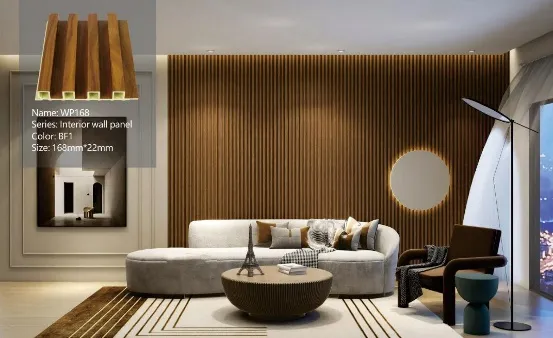
The Big Question: What's the Typical Lifespan of WPC Wall Panels?
If you're considering WPC wall panels, you're probably hoping for a clear answer: "They last X years." But as with most building materials, the truth is, it depends. In ideal conditions, with proper care, WPC wall panels can easily last 15 to 30 years . Some high-quality panels, installed and maintained with care, have even been known to hit the 40-year mark. But why the range? Let's break down the key factors that determine how long your WPC panels will stick around.
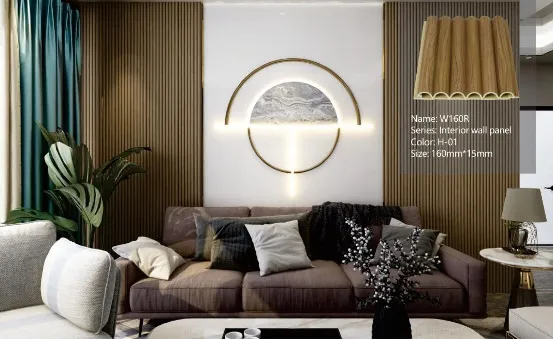
5 Factors That Make or Break WPC Wall Panel Longevity
1. Material Quality: Not All WPC Panels Are Created Equal
The first and most critical factor is the quality of the WPC itself. This is where choosing the right wpc wall panel supplier comes into play. Reputable suppliers invest in high-grade raw materials and rigorous manufacturing processes, while cut-rate options might skimp on key components. Here's what to look for:
- Wood-to-plastic ratio: A well-balanced ratio (typically 50-70% wood fibers to 30-50% plastic) ensures strength without brittleness. Too much wood can make panels prone to moisture absorption; too much plastic might crack under impact.
- Additives: UV inhibitors prevent fading in sunlight, antioxidants slow down degradation, and mold-resistant agents keep panels safe in humid spaces. A good supplier will include these in their wpc wall panel solutions .
- Density and thickness: Thicker panels (12mm or more) generally last longer, as they're more resistant to dents and impacts. High-density WPC feels solid to the touch—if a panel feels lightweight or hollow, it might not hold up over time.
Case in point: A restaurant in Riyadh installed budget WPC panels from an unknown supplier in their outdoor patio. Within 3 years, the panels had faded to a dull gray and started warping in the summer heat. Meanwhile, a nearby café chose panels from a reputable Saudi Arabia building materials supplier specializing in WPC. Ten years later, their panels still look vibrant, with no signs of warping. The difference? Quality materials and additives.
2. Installation: Even the Best Panels Fail with Shoddy Work
You could buy the highest-quality WPC panels on the market, but if they're installed poorly, their lifespan will plummet. Installation mistakes are surprisingly common, and they often come back to haunt you years later. Here's what to watch out for:
- Substructure prep: Panels need a flat, stable base. Using untreated wood substructures (which rot) or uneven metal framing (which causes panels to bow) is a recipe for disaster. Many WPC suppliers recommend treated lumber or aluminum subframes.
- Expansion gaps: Like all materials, WPC expands and contracts with temperature changes. Skipping expansion gaps (typically 3-5mm between panels) leads to buckling in hot weather and gaps in cold weather.
- Edge sealing: Cutting panels exposes raw edges, which can absorb moisture. A good installer will seal these edges with a waterproof sealant to prevent water ingress.
John, a contractor in Dubai, once shared a horror story: A homeowner insisted on installing WPC panels themselves to save money. They skipped the expansion gaps and used regular nails instead of the recommended clips. Within two years, the panels had warped so badly they had to be replaced. "I've seen properly installed WPC panels last 25 years in similar climates," John said. "Installation isn't just about putting panels on the wall—it's about future-proofing them."
3. Maintenance: A Little Care Goes a Long Way
WPC is often marketed as "low maintenance," but that doesn't mean "no maintenance." While you won't need to stain or seal it like wood, a little upkeep can add years to your panels' life. Here's what experts recommend:
- Regular cleaning: Wipe down panels with a soft cloth and mild soap (avoid harsh chemicals like bleach) to remove dust, grime, or spills. For outdoor panels, a gentle power wash (low pressure!) once a year keeps mildew at bay.
- Address damage early: A small scratch or crack might seem minor, but it can let moisture seep in. Use a WPC repair kit (available from most suppliers) to fill in nicks before they grow.
- Watch the sun: Even with UV inhibitors, prolonged direct sunlight can fade panels over time. If your panels face south in a sunny climate, consider adding a awning or using window film to reduce exposure.
4. Environmental Conditions: Where You Install Matters
WPC is tough, but it's not invincible. The environment where you install your panels plays a huge role in how long they last. Let's break it down by setting:
- Indoor vs. outdoor: Indoor panels (think living rooms, bedrooms) generally last longer—25-30 years—since they're shielded from rain, snow, and extreme temperatures. Outdoor panels, while durable, might hit 15-20 years without extra protection (like specialized outdoor-rated WPC with added UV and moisture resistance).
- Humidity and moisture: Bathrooms, kitchens, and basements are high-moisture areas. WPC resists moisture better than wood, but if panels are constantly damp (say, from a leaky pipe), mold can still grow. Ensure proper ventilation (fans, dehumidifiers) to keep humidity levels below 60%.
- Climate extremes: In places with scorching summers and freezing winters (looking at you, parts of Europe or North America), panels expand and contract more. This is where quality additives and proper installation (hello, expansion gaps!) become critical.
5. Traffic and Wear: High-Traffic Areas Need Extra Toughness
A panel in a quiet bedroom will last longer than one in a busy hallway or a kid's playroom. High-traffic areas see more bumps, scrapes, and impacts, which can wear down even the sturdiest WPC over time. For these spaces, opt for thicker panels (15mm+) with a textured finish (which hides scratches better) and consider adding corner guards or furniture pads to minimize damage.
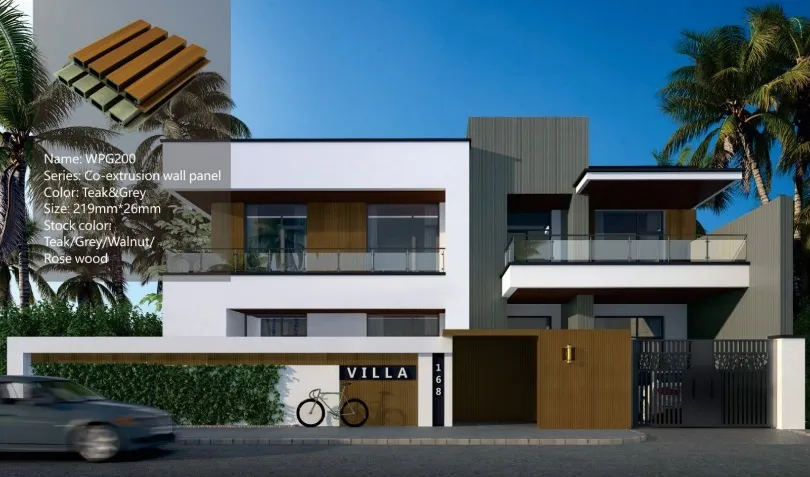
How Does WPC Stack Up Against Other Wall Panel Materials?
To truly understand WPC's longevity, it helps to compare it to other popular wall panel options. Let's take a look at how it measures up:
| Material | Typical Lifespan (Years) | Maintenance Needs | Best For | Durability Rating (1-10) |
|---|---|---|---|---|
| WPC Wall Panels | 15-30+ | Low (occasional cleaning, minor repairs) | Indoor/outdoor, high-moisture areas, high traffic | 8.5 |
| Solid Wood Panels | 5-15 | High (annual staining/sealing, termite checks) | Low-moisture, low-traffic indoor spaces | 6 |
| PVC Wall Panels | 10-20 | Low (easy to clean, but prone to cracking in cold) | Budget-friendly indoor projects | 7 |
| MCM Flexible Cladding Stone Wall Panels | 20-35 | Moderate (avoid harsh cleaners, seal every 5 years) | High-end exteriors, feature walls | 9 |
As you can see, WPC holds its own, offering a great balance of lifespan, maintenance, and versatility. While MCM stone panels might last a bit longer, they're often pricier and heavier, making WPC a more accessible option for many homeowners and businesses.
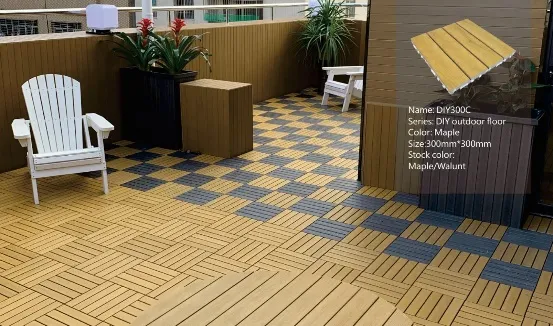
Real-Life Stories: WPC Wall Panels in the Wild
Numbers are helpful, but real-world examples tell the best story. Let's look at a few case studies of WPC wall panels standing the test of time:
Case Study 1: A Coastal Home in Saudi Arabia
Ahmed, a homeowner in Jeddah, installed WPC wall panels on his villa's exterior in 2008. Living just blocks from the coast, he was worried about salt air and humidity damaging traditional wood. He chose a local wpc wall panel supplier that specialized in coastal-grade panels with extra UV and moisture resistance. Fifteen years later, the panels still look vibrant, with only minor fading. "We power wash them once a year, and that's it," Ahmed says. "They've survived sandstorms, monsoon rains, and scorching summers—no rot, no warping. Best home improvement decision I ever made."
Case Study 2: A Busy Café in Dubai
Café Breeze, a popular spot in Dubai's Downtown, installed WPC wall panels in its dining area in 2015. With daily foot traffic, spills, and the occasional chair scrape, the panels take a beating. But eight years later, they still look new. "We clean them nightly with mild soap and water, and we had a few scratches repaired early on," says the café owner, Layla. "The supplier even checked in after a year to make sure everything was holding up. It's reassuring to know they stand behind their product."
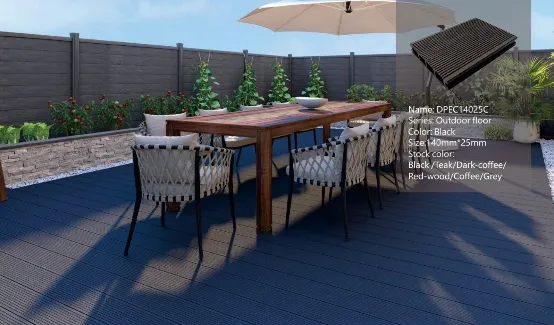
How to Extend Your WPC Wall Panels' Lifespan: Pro Tips
Want to make sure your WPC panels hit the upper end of that 15-30 year range? Follow these expert tips:
- Choose the right supplier: This can't be overstated. A reputable wpc wall panel supplier will offer warranties (10-20 years is common), provide installation guides, and have a track record of quality. Ask for references or case studies of their panels in similar environments.
- Invest in professional installation: Yes, it costs more upfront, but it's worth it. A skilled installer knows how to prep the substructure, leave expansion gaps, and seal edges properly.
- Inspect annually: Take 10 minutes each year to check for cracks, loose panels, or signs of moisture. Catching issues early prevents them from snowballing.
- Use the right cleaners: Stick to mild soap and water or cleaners specifically recommended by your supplier. Avoid abrasive sponges or chemicals like acetone, which can damage the surface.
- Consider location: If installing outdoors, opt for panels labeled "outdoor-rated" with added UV and moisture resistance. For high-moisture indoor areas, ensure proper ventilation.
The Bottom Line: WPC Wall Panels Are Built to Last
At the end of the day, WPC wall panels offer an impressive lifespan of 15-30 years (and beyond, with care), making them a smart investment for anyone looking for durable, low-maintenance wall cladding. Their longevity hinges on three key factors: choosing a quality wpc wall panel supplier , professional installation, and basic upkeep. Whether you're revamping your home's interior or cladding a commercial building, WPC panels deliver the best of both worlds—style that doesn't sacrifice substance.
So, if you're considering WPC wall panels, rest easy: With the right steps, they'll be more than just a design choice—they'll be a long-term companion, standing by through family gatherings, business meetings, and all the little moments that make a space feel like home.
Tags:
Recommend Products










